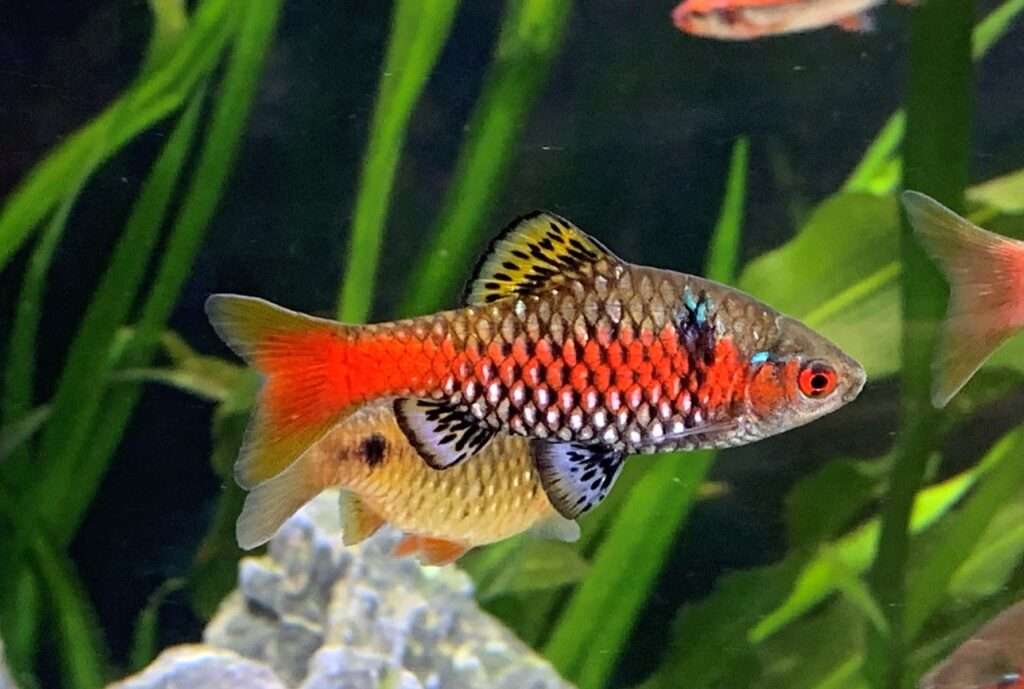
Size
1.8 inches
Physical Characteristics and Behavior
The Odessa barb’s body is lean. The body of the male is beige to light brown with a striking red stripe. Irises on males are crimson with a black stripe running across them. Males have dorsal, anal, and pelvic fins that are yellowish green with black spots. The background may get darker and the lateral stripe redder during spawning. The scales on the female are silvery and beige. Only the dorsal fin exhibits modest black spots on the yellowish-green female fins. A black dorsal and caudal patch can be seen on both sexes.
Keeping and Care in a Tank
Aquarists as easy-going and even resilient fish regard Odessa barbs. Because it is a peaceful schooling fish, it should be housed alongside at least 5–6 other peaceful species, excluding long-finned fishes. The Odessa barb may be seen in all its splendor when it lives amid several of its relatives because the fish are less stressed and create a distinct hierarchy at this time. This trait is unique to all barb species.

- Tank Size
You’ll need a reasonably large tank (from 80 litres or 20 gallons), densely planted, with room for the fish to swim. Don’t overdo the decorations, and don’t forget to leave room for swimming. Along the tank’s perimeter, several long-stalked, small-leaved tank plants are preferred.
- Water Conditions
Water with a pH-value of 6.3-6.9, a total hardness of up to 7° dGH, and a temperature of approximately 25–27° C are the ideal conditions for fish.
- Feeding
Feeds in the wild on plant matter, insect larvae, and trash. It doesn’t reject any food and doesn’t need a special diet, therefore feeding it in a tank is not an issue.
- Tank companions
Fish from Odessa are calm and nonaggressive. However, like all barb species, it should be kept in a school because, if the fish is kept alone, it becomes stressed out very rapidly. A group of barbs, such as tiger barbs, cherry barbs, and denison barbs, will look fantastic together. Additionally, molly, neon tetra, and zebrafish make excellent tankmates. Despite not eating prawns, the Odessa barb may cohabit with them. The Odessa barb cannot be kept with large, predatory fish, such as rope fish or bichir, because they will mistake the barb for food. Additionally undesirable tank mates for this barb are slow long-finned fish.
Table





